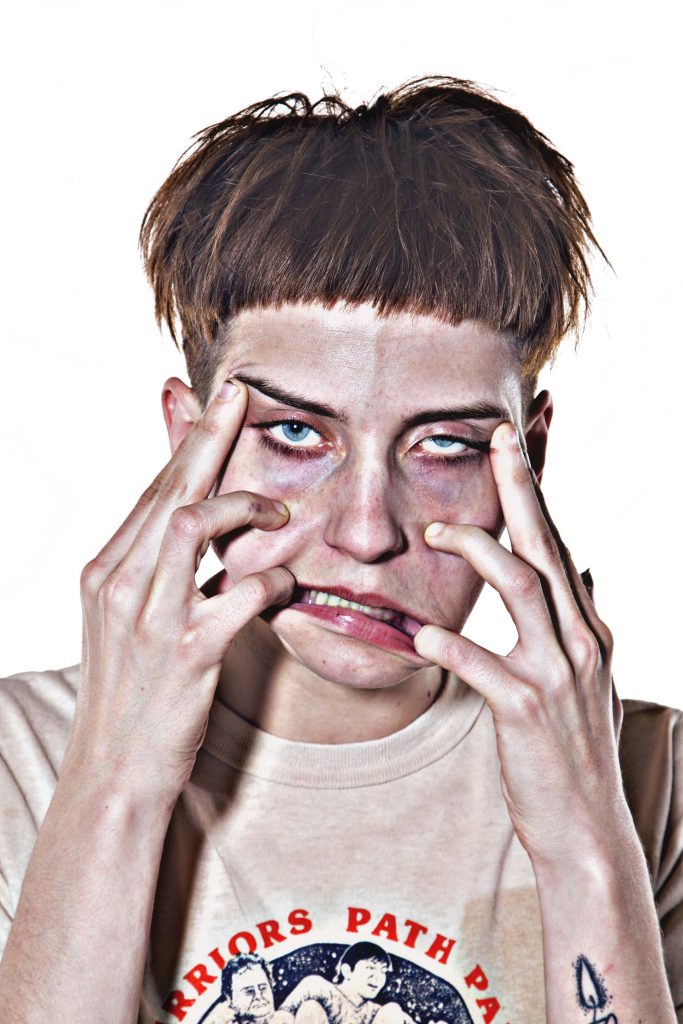
It’s difficult to classify things in this post-genre, post-facts, post–Donald Glover world (seriously, what do we call Donald Glover? A musician? An actor? A comic? God?). The creative floodgates that once—perhaps arbitrarily—divided artistic mediums and various forms of entertainment are now gone. As a result, the art that tends to stick out in today’s cultural stew brings audiences a general experience or a world—not just a single piece of work like an album or an exhibit. Joe Rogan fans, for instance, aren’t particularly drawn to his comedy or his MMA commentary or his penchant for trendy chemicals. Rather, they’re drawn to the concept of Joe Rogan—this thing or vibe that’s created when you mix all of the above (and Lord, what a vibe it is).
Such is the case with local “art enterprise” Crappy Magic. Defining it is sort of tricky. Yes, it’s an art magazine. Yes, it’s an “experimental retailer.” Yes, it’s a collection of loosely connected experiential art exhibits and a series of faux infomercials posted on Instagram. But more than anything, it’s the weird cosmos of David Hellams’ mind. With help from a rotating cast of collaborators like David King, Tyler Blankenship, and past NATIVE artist spotlight subject Rachel Growden, Hellams has created a world that’s somewhere between PeeWee’s Playhouse and Tim and Eric—an endearing collection of absurd art projects and events that include everything from The Crappy Magic Experience (a sort of found-object bazaar in which patrons scan thrift store items at a video kiosk and then watch Hellams-directed videos relating to said items) to The Commission to Rescue Abandoned Paintings (an art gallery that “plucks the discarded works of amateur and unknown artists from the brink of oblivion and gives them another chance to be enjoyed”).
Hellams’ last project was a collaboration with Erin Plew called The Medium is the Message: Answering Machine, which showed at the Packing Plant in early June. For the exhibit, the duo created a living room (complete with buyable used objects) based on tapes from an old answering machine that Plew found (more on that later). While the decor of the living room was pretty standard for the late ’90s, the contents on the answering machine—which detail the hospice arrangements for an aging family member—were anything but normal. We sat down with Hellams and Plew to talk Crappy Magic, the genius of kitsch, and what it means to mourn.

Okay, because Crappy Magic is outside of what some readers expect from an art project, can you briefly explain what exactly this “thing” is?
David Hellams: Crappy Magic began as a photography magazine, depicting piles of disorganized, discarded consumer goods in sometimes artful ways. I was making the images largely in-store while shopping at thrift outlet stores in Nashville and elsewhere. What began in 2015 as an independently produced photo zine expanded the following year into a series of interactive art events called the Crappy Magic Experience, developed in partnership with my friend David King. People really responded to our curated collection of thrift store items and the interactive displays based on the items. We also staged performance art benefit auctions, which people enjoyed both for their absurdity and for the competitive thrill of bidding at low dollar amounts.
You describe Crappy Magic as an “enterprise” rather than just an art project or magazine. Can you elaborate on what that means beyond the obvious fact that Crappy Magic incorporates multiple artistic mediums?
Hellams: I have produced a lot of things now under the name Crappy Magic. I view Crappy Magic as a conceptual business. Now, it is not a profitable one yet—I do want it to be that someday. But to me it is a conceptual success already, in that the means by which Crappy Magic goes about the business of selling items, videos, or experiences is in itself the substance of my “art.” In each Crappy Magic sales event, I carefully consider the merchandise I will present and the processes by which viewers will browse and purchase from the show. I create these sort of video art infomercials that advertise the show while also outlining its themes. The items you buy from the showroom might or might not be works of art. Either way, my aim is that the experience you have at the sales event be thought-provoking, distinctive, and truly memorable.
What do you look for in found objects when you’re out thrifting or shooting for the Crappy Magic magazine? Do you have an intentional set of guidelines that dictate what you’re looking for, or is it more an impulsive thing?
Hellams: In both photographing and buying for Crappy Magic, I have developed a loose internal system that tells me what I can use and how much I’m willing to spend or work to get a shot. But as I’m browsing the stores, I allow impulses or intuition to tell me what is actually worth running against the system. If it passes, I buy or snap the picture. Items that will go in the Crappy Magic Experience bins can’t be too fragile, for instance, because viewers will handle them at the shows. But more importantly, an item should have the potential to spark an imaginative response in viewers, which by now is a determination I make both by intuition and experience.
In making a photo, I may see a decent composition lining up around a toy dinosaur ravaging a circuit board city, but if there are too many shoppers around or the background isn’t ideal, I might not bother making the picture, since I have already made other successful ones with similar elements. At this point I can be pretty picky, because I have learned that everything I take on board creates more work!

Of all the found objects you’ve salvaged or thrifted, what is your favorite?
Hellams: That’s a tough one! There’s this painting that I’ve had hanging over my bed for a couple years now. It is a landscape with a pond in the middle of a field with some background hills. It is damaged, with multiple tears in the middle of the canvas. And it’s one of the most beautiful things I own. It’s signed simply in the bottom right corner, “B.” I’ll send you a picture of it. My personal associations with it include the little hidden lakes in the first Zelda game, the pond where I got high for the first time as a teenager, and a pleasant sort of folk art vision of the afterlife. The damage makes it more interesting, not less—a constellation of holes above the pond makes a little face, like a pond spirit.
Currently I am also very much enamored with a bear doll I acquired recently—it looks super old, stuffed with some kind of straw or wood shavings, which you can see through a large hole in its left side, and its cartoon eyes look either gentle or dead, depending on your angle of view.
At the Crappy Magic Experience 2018 exhibit, you encouraged viewers to haggle with you over items. And at NATIVE’s May 2019 Creative Release party, you made this cheesy, Tim and Eric–adjacent infomercial for your collaboration with Rachel Growden. In both of these instances, you seemed to ride a line between parodying kitsch and actually really admiring or loving kitsch. So, my question is: Does Crappy Magic ironically love that kind of tackiness, or do you have a genuine admiration for kitschy media?
Hellams: Crappy Magic is partly about the functional role of kitsch objects and culture in daily life. It’s also a satire on consumer culture and the art market, but I hope it comes across as a good-natured one that challenges our thinking by positing alternatives to the status quo in a celebratory and welcoming fashion. For the most part, I genuinely admire the items I share as part of the Crappy Magic Collection. If admire isn’t always the right word, I at least see some imagination-sparking capacity in the items that tells me viewers may respond similarly if things are presented well.
The reason I’m haggling over the things is because I consider them to be of a certain value, and I take the exercise seriously, though many of the things are admittedly silly and useless by some standards. If I ask you for a few dollars more on a really neat item, that is not out of whimsy or capriciousness, but out of a genuine regard for the item—its market value, age, and uniqueness. I have to weigh the amount of pleasure it gives to me and to the people who experience it in our shows against my desire to move merchandise and send customers home happy. I will acknowledge that there is a certain amount of theater to the formal haggling process, and in light of the merchandise it could seem like an ironic gesture, but whether it is or not, it does succeed in opening people’s minds to what these items could be worth. That’s both a conceptual and a business goal of mine!
I’m glad you raise the relation between my videos and contemporary ironic sketch comedy but also asked about a possible distinction. The media content I want to create definitely trades in some absurd humor, but hopefully it is warmer, calmer, maybe even “safe for work” much of the time. I was an adult fan of Fred Rogers for many years prior to last year’s beautiful biographical documentary, Won’t You Be My Neighbor? My generation has grown up on a lot of sardonic, frenetic comedy. Maybe as we get a little older, and we’ve seen the effects of that side of our culture taken to their fullest extent, we might like to take our absurdity sometimes with a dose of congeniality. Like Mr. Rogers, I want my videos to be like a welcoming place viewers can become familiar with and return to.
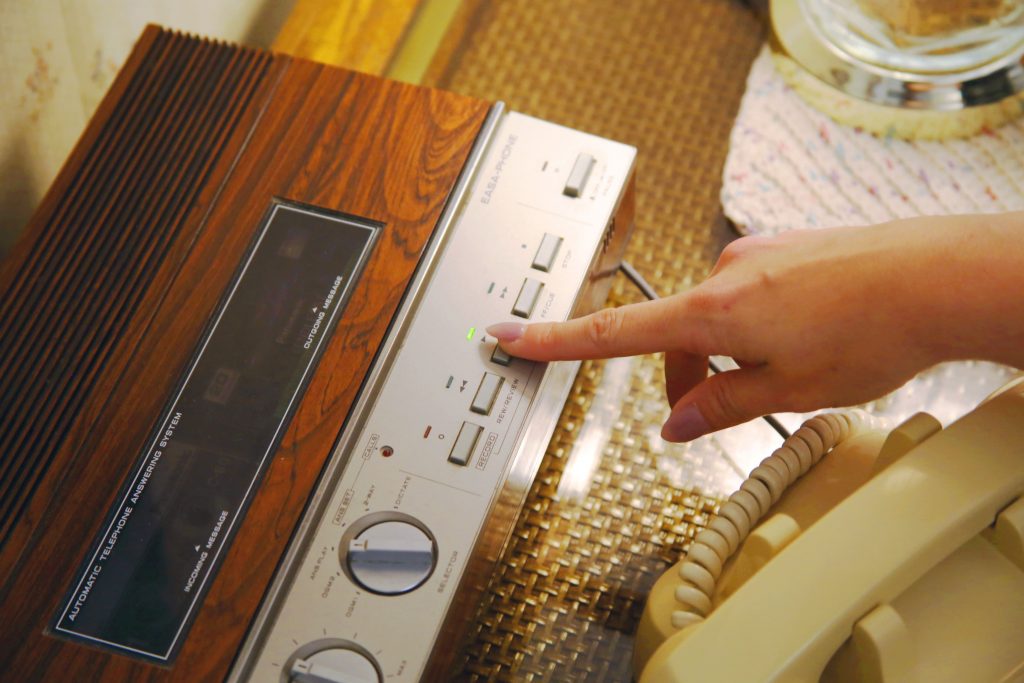
Walk us through the process behind The Medium is the Message: Answering Machine. How did you come up with the idea, and where did you find the answering machine? Did finding the machine inspire the show, or vice versa?
Erin Plew: In the process of gathering props for an indie film I worked on in Appalachia last fall [The Evening Hour], I found this amazing wood paneled answering machine. I was surprised when I plugged it in that the cassettes still had the recordings of the machine’s former owners. Having no time to listen to it in the whirlwind of working on that movie, I was excited to show it to David when I got back to Nashville.
We rewound and listened and couldn’t believe the beautiful and poignant—and sometimes funny—stories these recordings told. You really start to empathize with the mother, Barbara. The sadness in her voice is palpable as she speaks to concerned friends and family members and arranges hospice care for her dying husband. When the son starts calling in, desperately trying to get through to get some nutrients and a trip to the RadioShack, it’s a little unsettling at first. But it becomes almost a farce as his persistent calls continue to be ignored. As listeners, we had to reconcile our perception of the family’s grief with this series of obsessive, repetitive rants that sounded not unlike a stand-up comedian’s monologue.
We loved the story and began throwing out ideas of how best to present it. A lot of those ideas seemed to take away from the story and its characters, and we ultimately decided to create [Barbara’s space] as we saw it—based on what the recording tells us about the characters. We surmised that the original voicemails were probably left in the late ’90s or early 2000s, so everything in the space is from that time period and before. Found family photos can be seen on the walls, in frames and in a family photo album on the coffee table, providing a further glimpse into what kind of people this family could be. The more you listen, the more you feel like you know them and pick up on subtleties that you hadn’t previously noticed. We really enjoyed getting to know this family through this artifact they left behind and took special care to respect the kind of people they may have been and the space they could have inhabited.
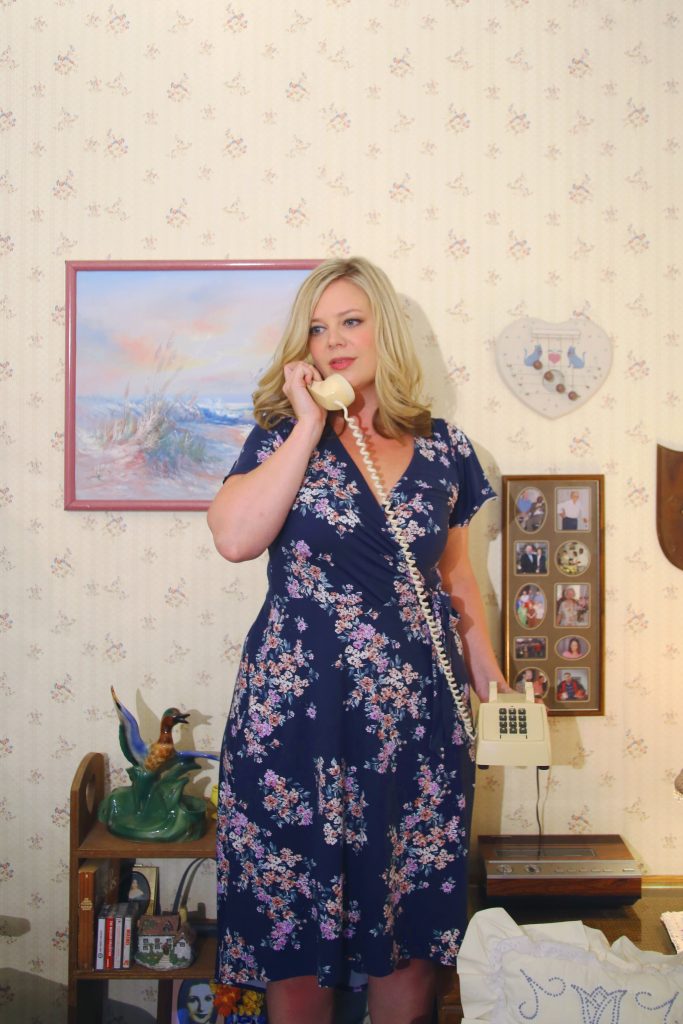
The show flyer for The Medium reads, “There is a universal pathos to the messages related to this family’s arrangements for hospice care and offers of assistance and condolence.” What did the messages teach you about family and grief?
Plew: Another’s grief is almost impossible to completely understand. We all experience it in profoundly varying ways that are as unique as each of us. Sometimes the only thing we can do is to reach out to those we love going through personal tragedies, but our words often sound trite and shallow in comparison to the enormity of what the grieving person is experiencing. It’s interesting to hear those close with the family on the answering machine attempt to convey their sympathy and put these feelings into words. Alternatively, the way in which the social workers and the VA talk to the family seems sometimes flippant as they leave messages about end-of-life plans. It’s strange to feel as if you almost embody Barbara’s person by sitting on her couch, surrounded by her belongings, casually listening to the alternating messages. I think creating her space around the viewer takes away some of the inherent voyeurism and replaces it with a bit more of an understanding and empathy for what she must be going through.
Crappy Magic’s next project, a collaboration with Bridget Bailey tentatively titled The Commission to Rescue Abandoned Middle School Ceramics Projects, will open July 6 at The Packing Plant’s Crappy Magic Showroom.
Suggested Content
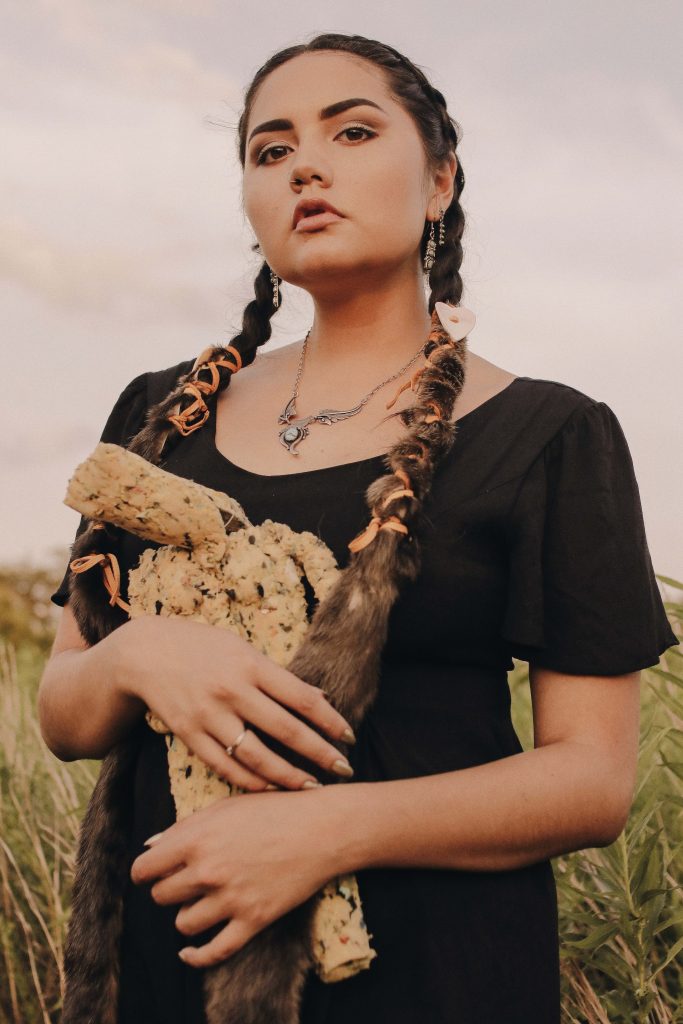
Chelsea Kaiah James
Why aren't there any ears sculpted onto the presidents of Mt. Rushmore? Because American doesn't know how to listen. - Unkown
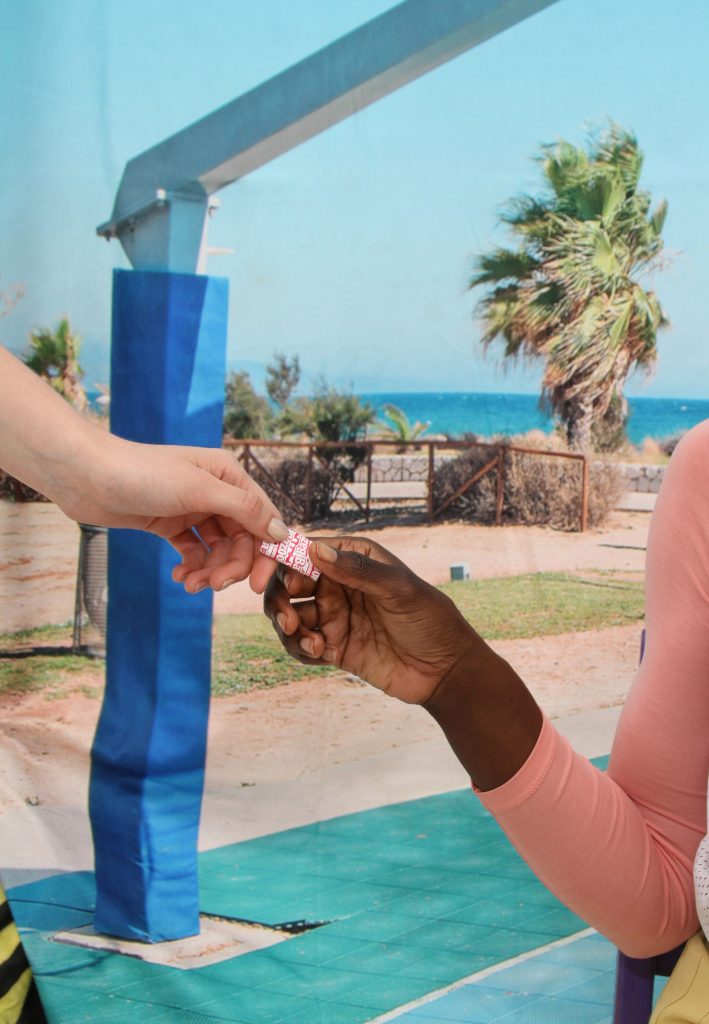
Contributor Spotlight: Dylan Reyes
When I create, I often think of what Johannes Itten said, “He who wishes to become a master of color must see, feel, and experience each individual color in its endless combinations with all other colors.”. I’m also inspired frequently by love and loneliness and want folks consuming my work to be encouraged to start paying attention to the little details in everyday life, appreciate the simple things, and let them eventually inspire you! Ultimately, I’m just trying to become a mother fuckin master of color.

